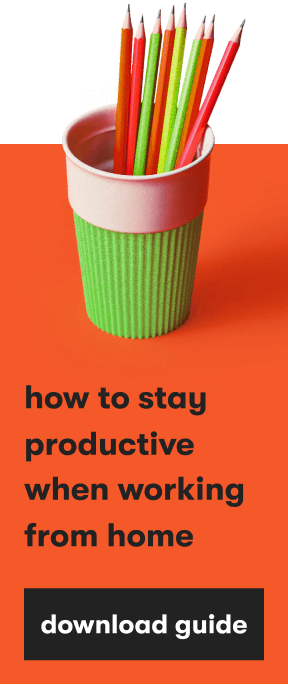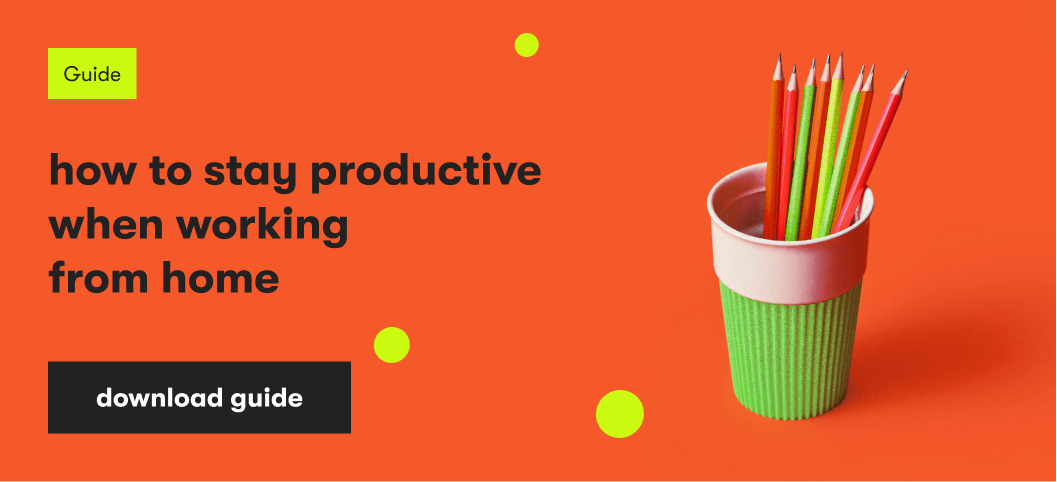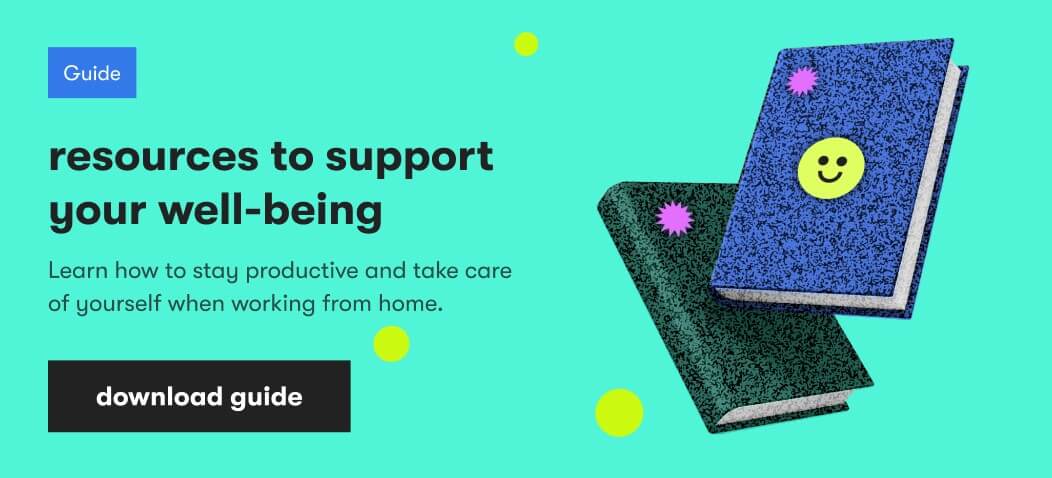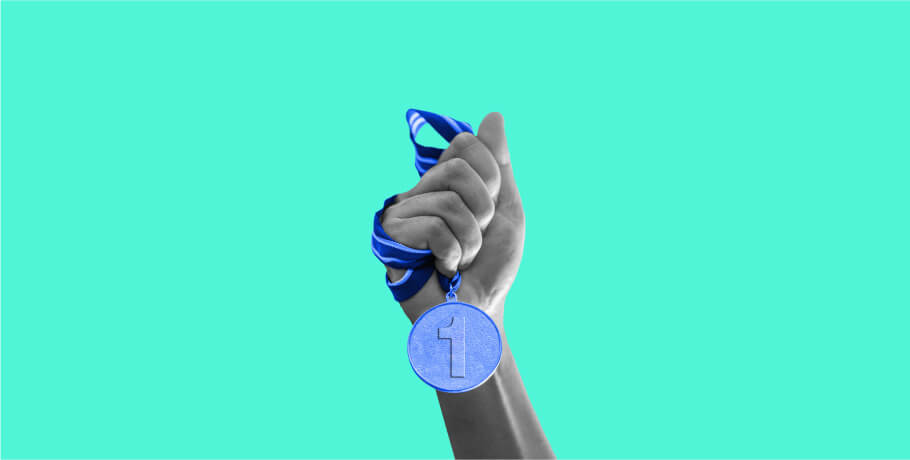No telecommuting, no makeup or constricting clothing, no office distractions. Isn’t it wonderful to settle down in front of your computer in your comfy clothes and take short breaks as often as you need them? If you are like most of us, your answer is probably “yes… and no.”
Since the onset of the global pandemic, many of us have dipped our toes in the remote-work experiment. And many, if not most, of us found it quite challenging to keep work from encroaching into our home life.
On the one hand, remote work offers such benefits as flexibility, a comfortable working environment, and time saved on commuting. On the other hand, working from home makes it harder to socialize with colleagues and maintain a disruption-free working space.
Since remote jobs remain a reality for many, let’s see how to make the most of the benefits and address potential difficulties while retaining control over your life.
First, let’s take a quick look at the pros and cons of working remotely.
Benefits of working remotely
You overslept and woke up 10 minutes before you had to clock in, or maybe you decided to try out a new morning exercise routine? No problem — working from home gives you plenty of flexibility.
You sit in front of the screen looking comfy rather than camera-ready? That’s okay because, unlike an in-office work setting, comfort homewear is one of the obvious benefits of remote working.
In addition, not wasting your life on traffic and commuting means you can probably find a few minutes here and there to toss in some laundry, do the dishes, and handle a few more quick items from your household chores list.
The ability to make home-made meals can potentially save you money if you have cooking skills and the willpower not to order takeaway. Having no common office distractions at home means that you can turn up or down the heater/AC as you please, without hearing a peep; and you don’t have to listen to colleagues debating politics, finalists in So You Think You Can Dance, or cooking recipes until they are blue in the face. Even better, you can snuggle with your cat or dog while checking emails and you’re always there for your kids — to give a hug, check homework, or fix a snack.
Disadvantages of working from home
The bulk of the disadvantages of working from home can be summed up as lack of the work environment. People say that sorting work issues can drag on for hours because everyone is on flexible schedules, or put their phones on ‘do not disturb’, or misunderstood the assignment, etc. Without the energy of a traditional office space, people also say that it takes them longer to complete their daily tasks.
In addition, people experience technical difficulties with their laptops and desktops; their internet connection may be iffy; neighbors are noisy, and family members can be a source of interruptions throughout the day. In some cases, online collaboration is not as effective without offline interactions, and there are days when only strong willpower helps you stick to your work routine when Netflix is within an arm’s reach.
Mitigating work-life imbalance
It’s ironic that people used to list working non-traditional hours as one of the major advantages of working from home. But this flexibility often turned out to be the biggest challenge. Like many of us, you may have found that not enough face-to-face time with teammates and constant disruptions extend your workday well into the night. Feeling overworked, perhaps you start to procrastinate and then struggle to meet deadlines. Free time disappears as your productivity declines and you are constantly in the ‘catching-up’ mode.
So how do you break the vicious cycle of work expansion and embrace the benefits of remote working? We’ve compiled a handful of tips that can help boost your productivity and enhance your satisfaction with life and work.
Meet your basic needs first
Did you know that even a single night of insufficient sleep can increase hunger and food cravings, particularly for calorie-dense foods? Lack of sleep and a low-quality diet can easily undermine performance and health. Lack of movement can increase your likelihood of obesity and health issues. So what steps can you take right now to put you on the path to a recalibrated work-life balance?
Sleep. Well-rested employees make better decisions; have better health, memory, and concentration; and are less moody, more creative, and even more ethical. Scientists seem to have succeeded in convincing employers that sleep is the ultimate performance enhancer. Some companies even offer nap rooms to ensure their workforce doesn’t experience sleep deprivation and is always ready to create incredible products.
Away from your on-site professional environment, the responsibility for getting enough shut-eye falls on you. And what does good sleep mean, in practical terms? Studies suggest that seven to nine hours of uninterrupted sleep, in a cool dark and well-ventilated room (without the influence of drugs or alcohol), is optimal for adults.
If your sleep patterns are disrupted and you have trouble falling asleep before midnight, or you wake up in the middle of the night and cannot fall back asleep, there are recommended changes that you can make to your daily routine:
- Stepping outside to get some sunlight within an hour of waking up can signal to your circadian clock that it’s time to start the day, and can also help you fall asleep that night (try to get at least 10 minutes of sun on sunny days and up to 60 minutes on overcast days).
- Wake up and go to bed at the same time each day, even on weekends.
- Make sure caffeine isn’t interfering with your sleep (some people need to stop consuming caffeine 12-14 hours before bedtime, but usually 4-8 hours will do the trick).
- Use blue light blockers and dim bright overhead lights a couple hours before your chosen bedtime.
- Use NSDR or Yoga Nidra scripts to help you fall asleep (YouTube offers scripts from 10 minutes to several hours read with different voices).
Nourishment. A healthy eating plan can prevent you from snacking on junk food, skipping meals, and eating at irregular hours. Use working within walking distance of your kitchen to your advantage: eat fresh food daily, stick to a meal schedule, save time by using leftovers, calculate the proper balance of nutrients for you, and so on. Don’t feel as though you need to default to ordering food. Even if you don’t think of yourself as a cook, YouTube can teach you how to stock, prep, and cook easy meals without a hassle.
If you tend to grab a bite to eat on the run, or forget lunch because of your workload, you might discover that having at least three proper meals a day helps you focus and be more alert. If you are someone who tends to reach for carbs when you are overly hungry or stressed, you might find that you feel better eating healthier food options every three hours because it stabilizes your blood sugar levels. Consulting a professional nutritionist can help you identify a way of eating that suits your body’s needs.
Rest. Studies show that the human body has 90- to 120-minute energy cycles. If you start yawning, feel restless and hungry, and have trouble focusing on the task at hand, it’s time to change gears and take a brief break. Step outside to clear your head. Observe birds or other animals out your window. Do some stretches on the balcony. Help your body replenish its energy levels.
Microbreaks throughout the workday are part of respecting our bodies and we can help ourselves recharge by stretching, petting our dog or cat, or gazing out a window. You have probably discovered, however, that daily self-care can be overlooked because of longer hours, anxiety, or a lack of awareness of its critical importance. It is essential for remote workers to establish a clear routine and to spend their after-work hours away from screens, emails, and work responsibilities. Attend a pottery class, have a workout session in the park, or see a friend. Don’t feel guilty, as better rest makes you a better employee.
Exercise. In 2020, the World Health Organization reviewed its guidelines on physical activity. They recommend that healthy adults ages 18 to 64 get moderate aerobic exercise for at least 150–300 minutes per week. The intensity should be enough to increase your heart rate and break a sweat, but you should be able to hold a conversation while exercising.
Taking a brisk walk outside or choosing another heart-pumping physical activity (swimming, dancing, tennis, etc.) will improve your overall health, and your information processing, memory retention, and decision making. And if you can’t commit to long chunks of time for exercise, even shorter periods of activity can have beneficial results.
What’s your take on the pros and cons of remote working?
For working remotely, the pros and cons can be mixed, depending on your approach. On one hand, you don’t need to scramble for a bus or sit in traffic in the wee hours, but you may need new strategies to keep up your level of productivity. Making phone calls, crafting emails, and coding in the comfort of your home can be awesome for obvious reasons, but without proper support for your physical, mental and emotional energy, there can be downsides.
Without a strategy, your levels of distraction can increase, your engagement with projects can decline, and it may start to feel as though the cons are outweighing the pros. Don’t worry if you have found yourself going down that path. Creating a healthy workflow, setting clear boundaries, and optimizing your work-life balance can start with just a few basic physical things: sleep, eat, rest, and exercise well.

Explore our Editorial Policy to learn more about our standards for content creation.
read more






















